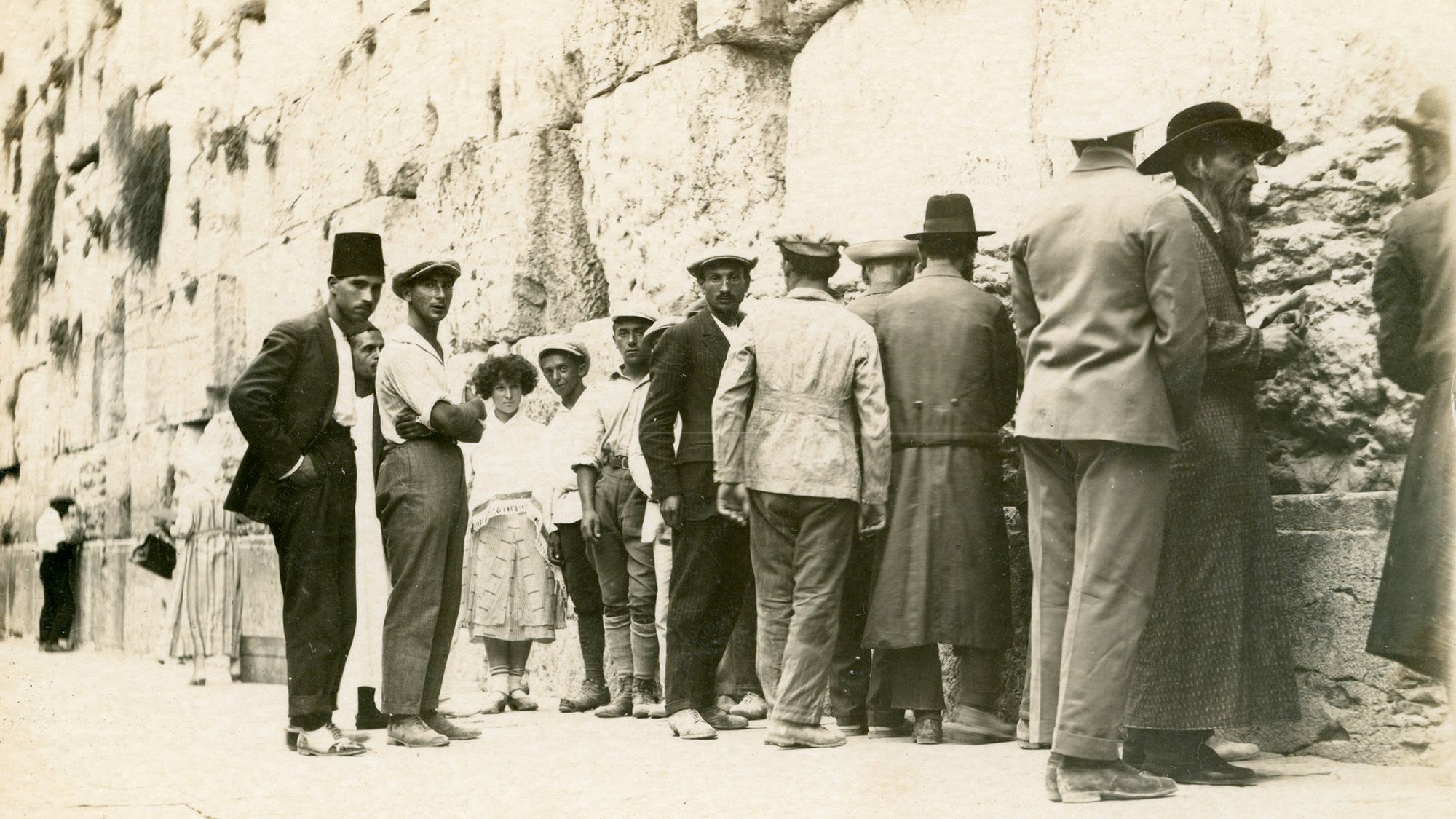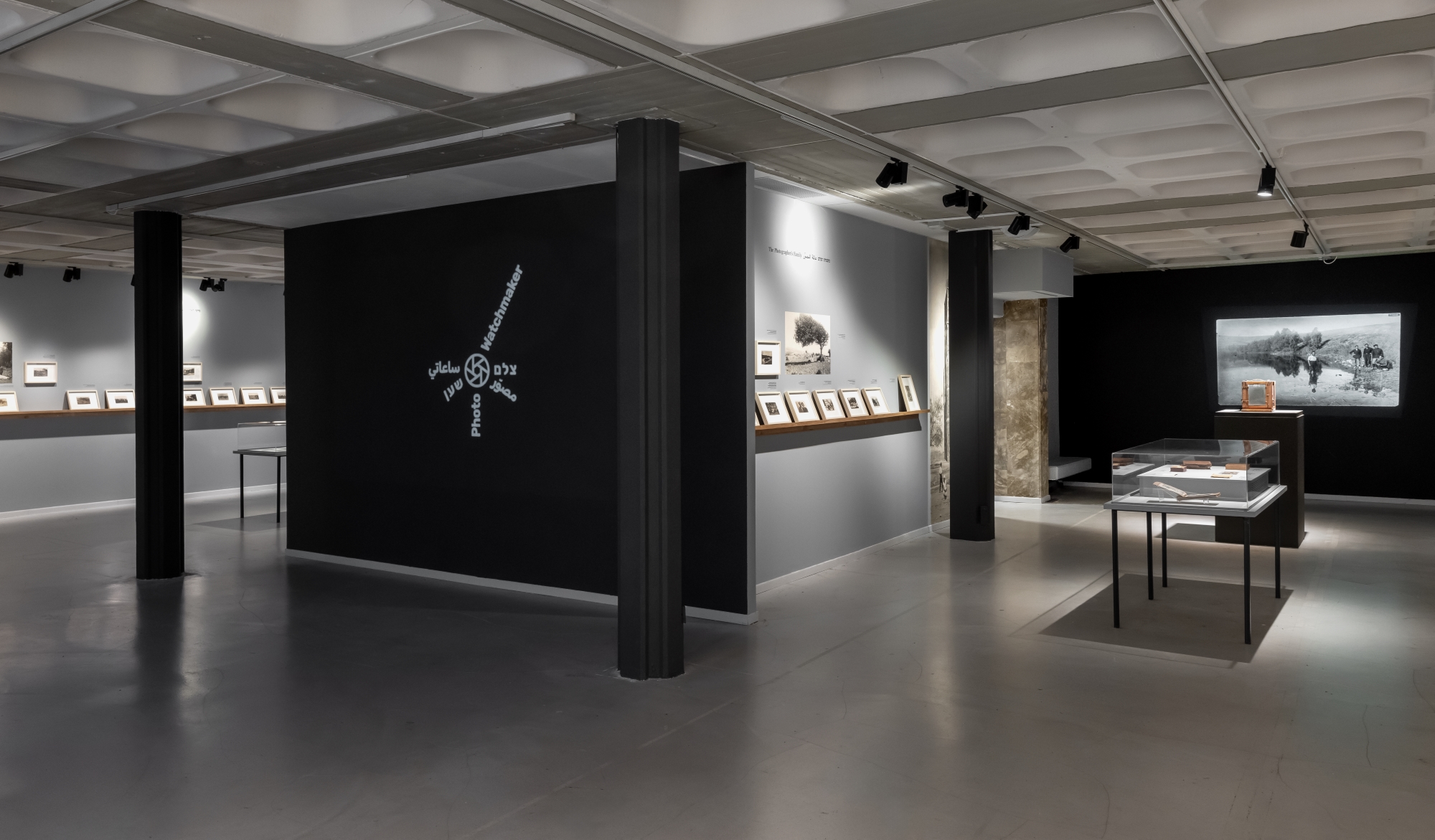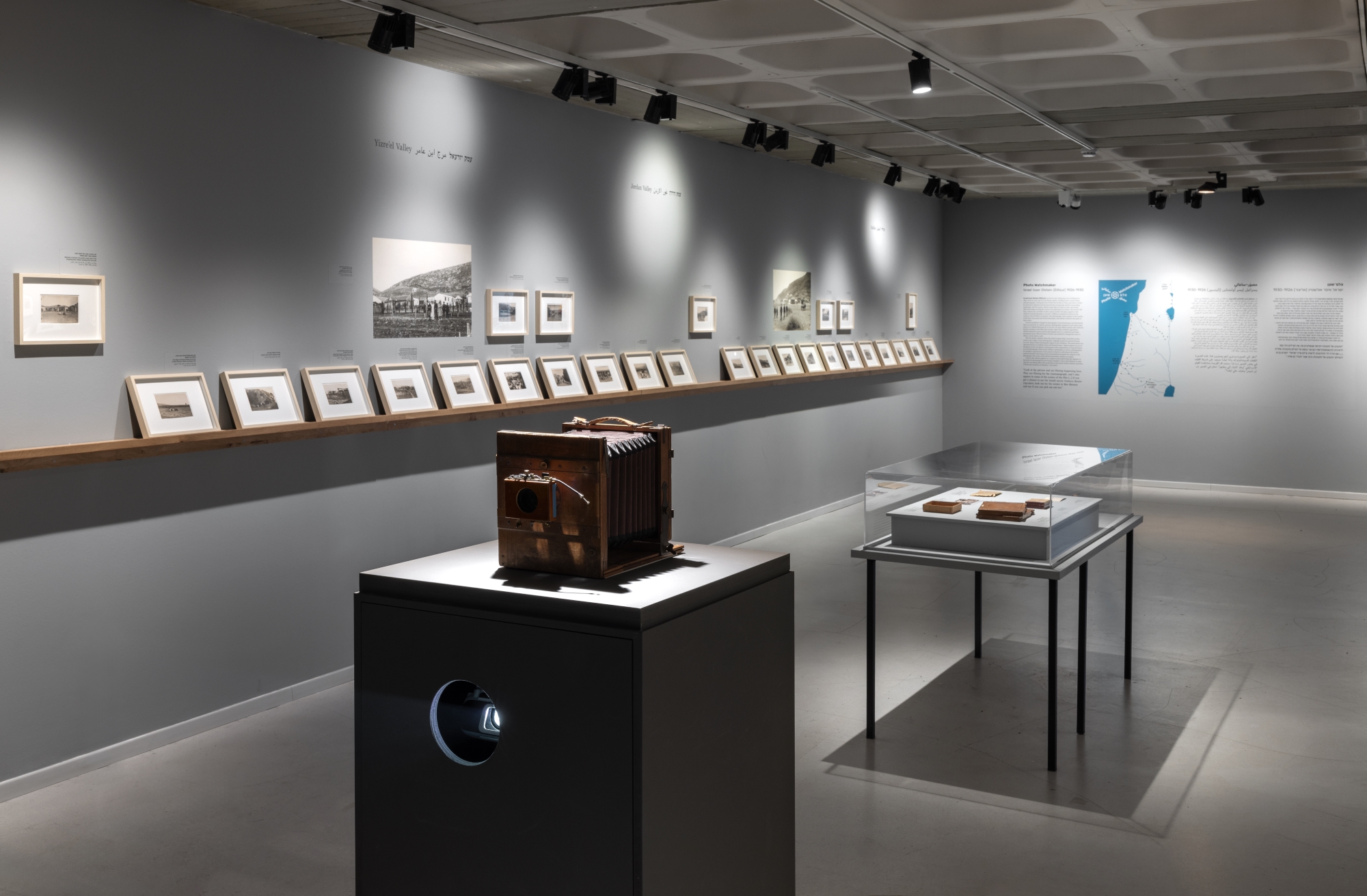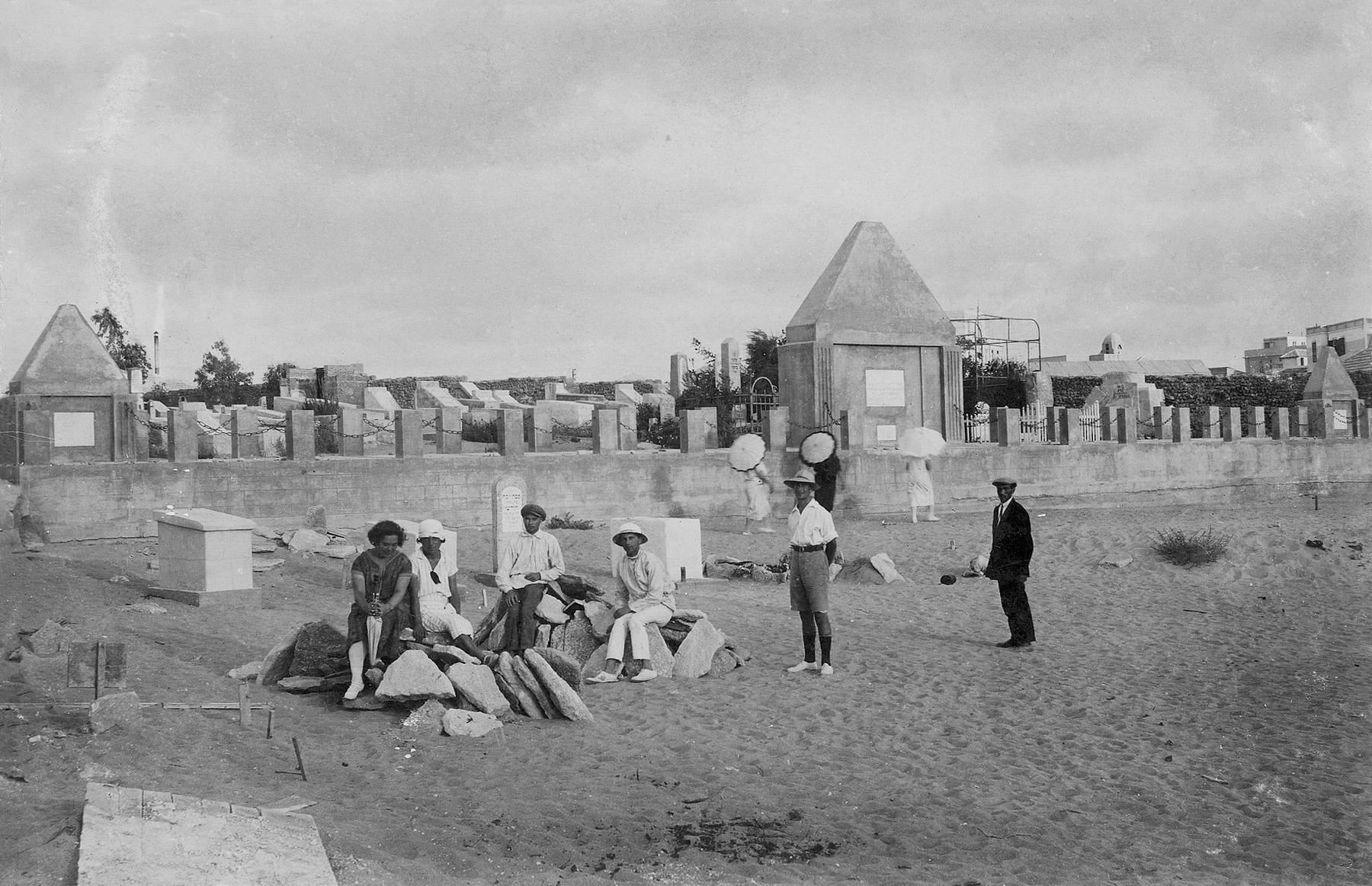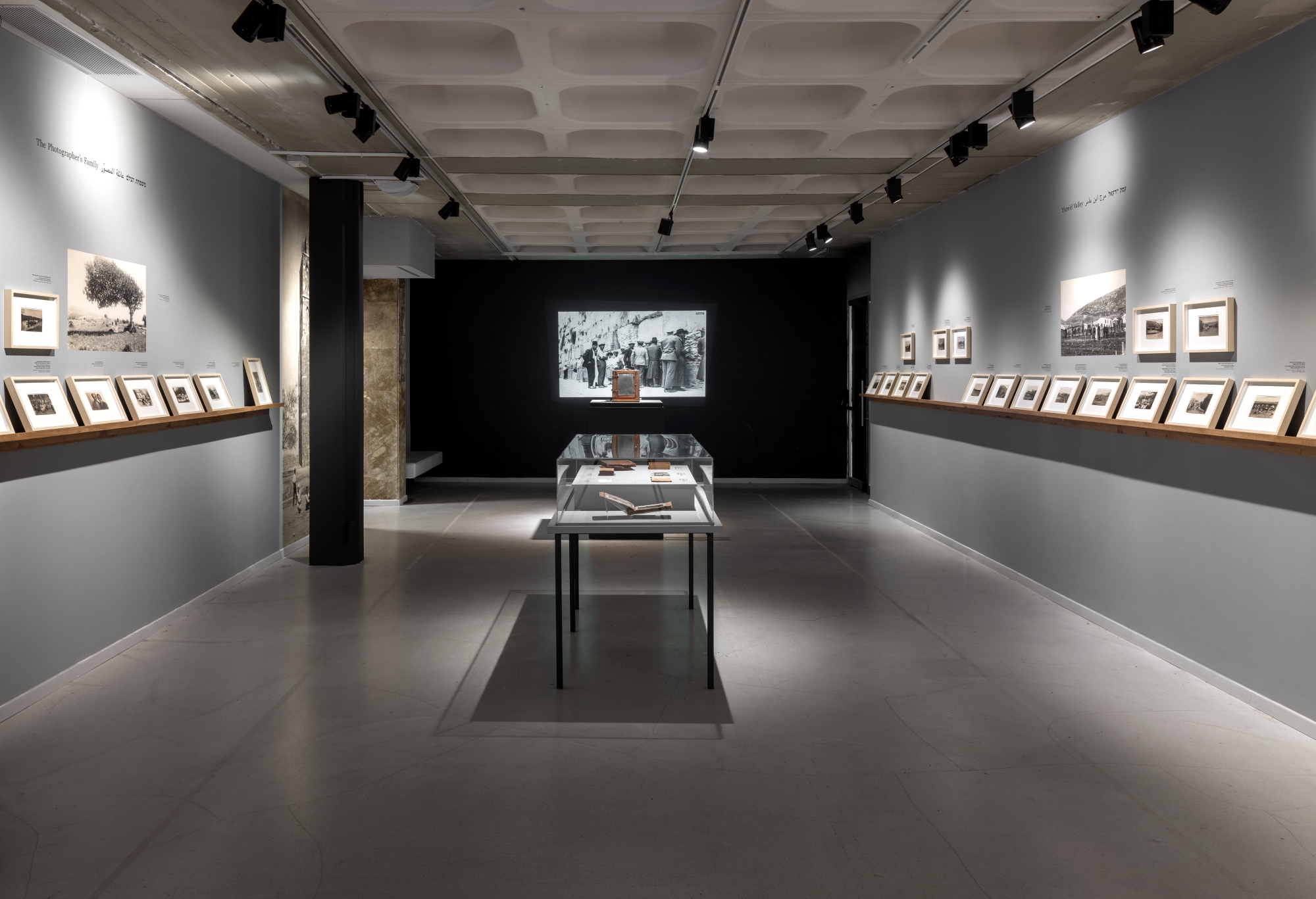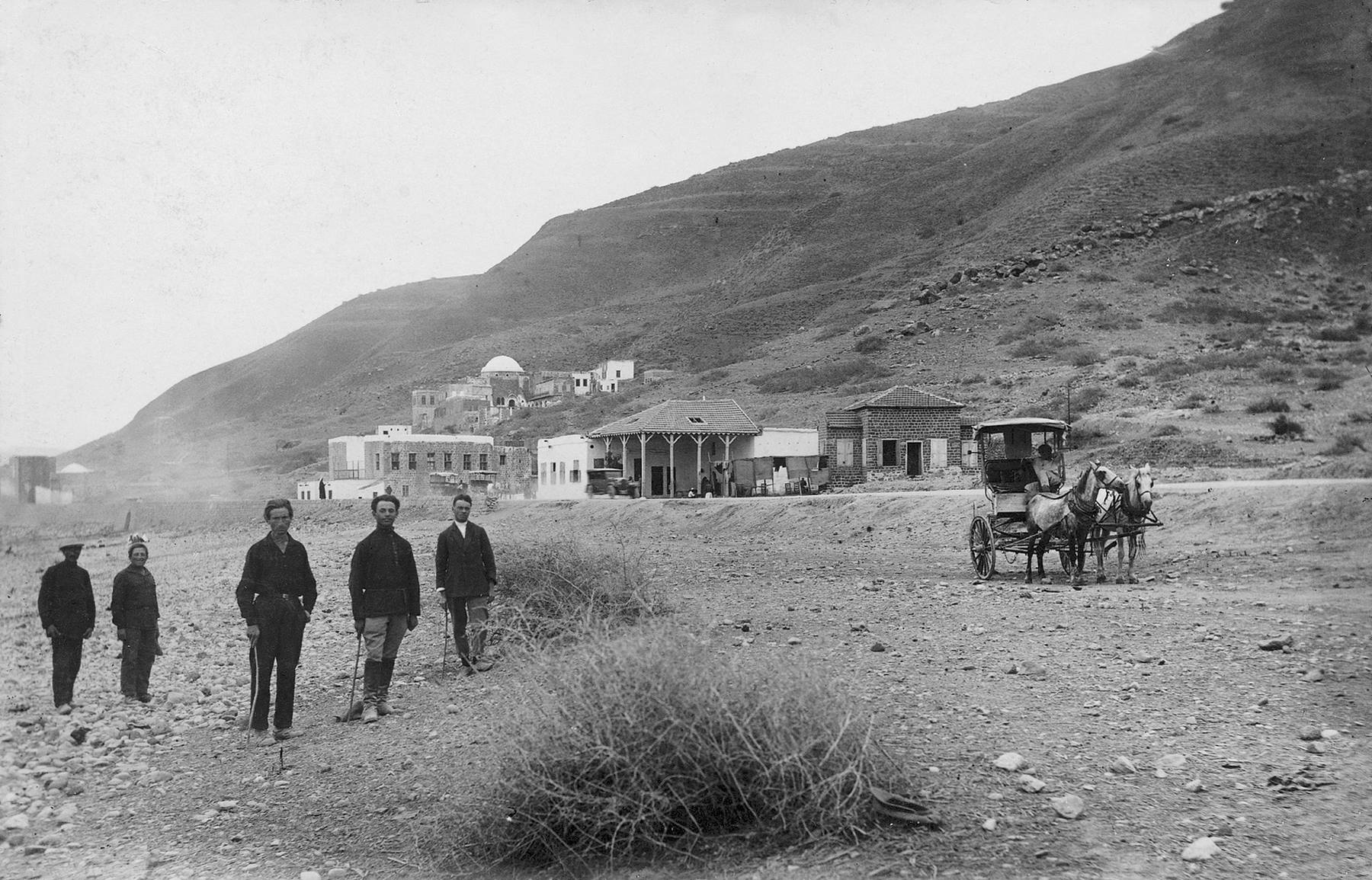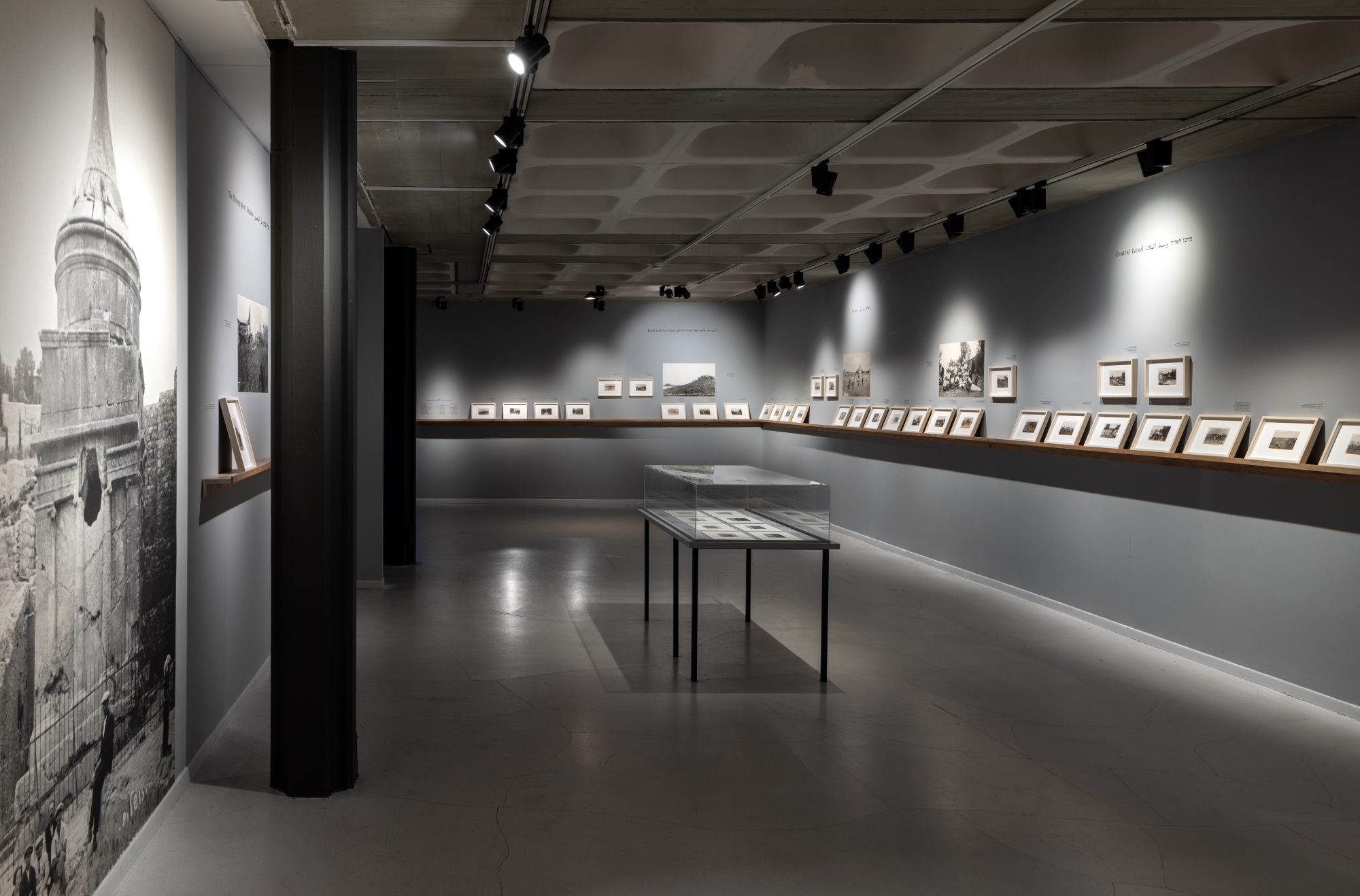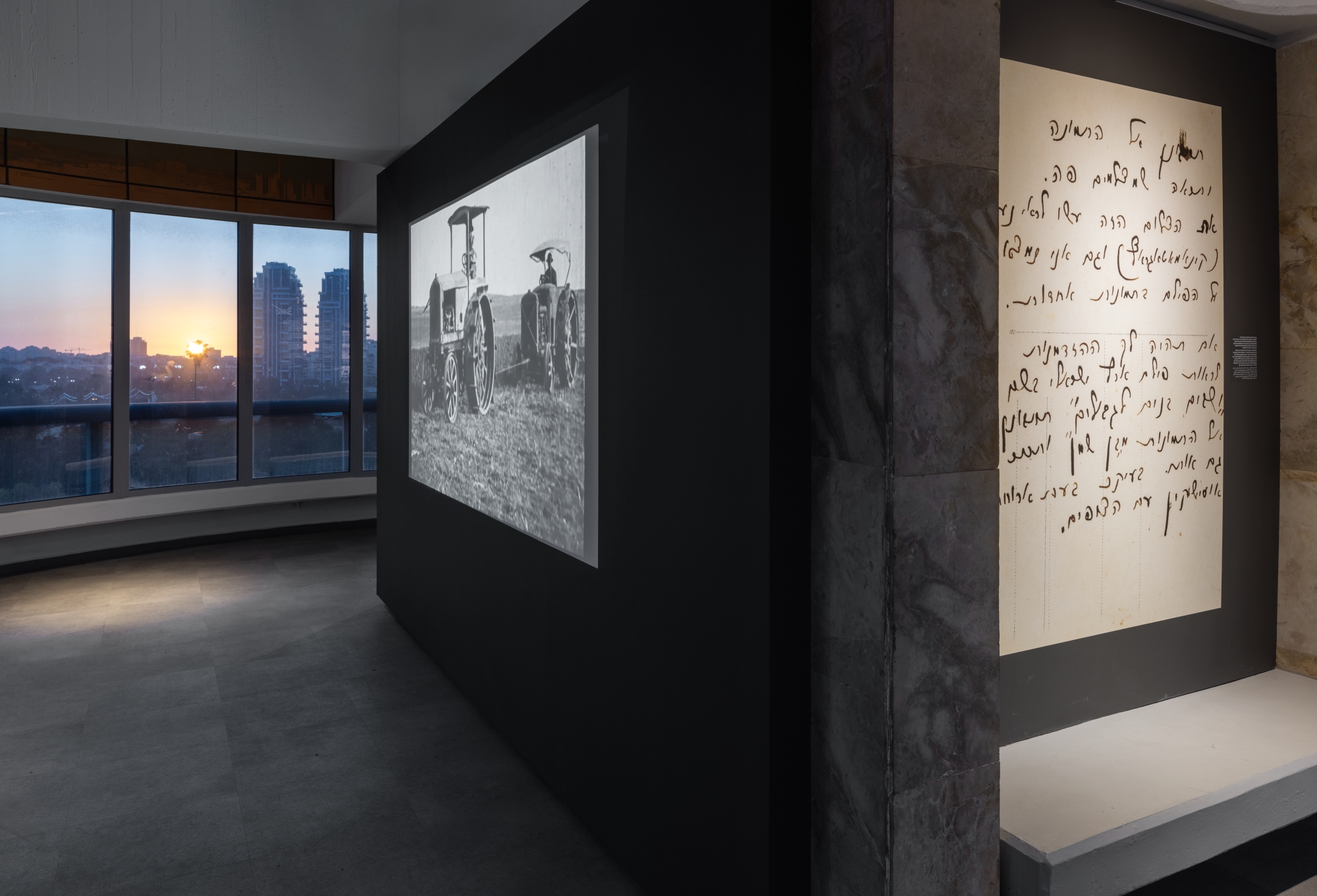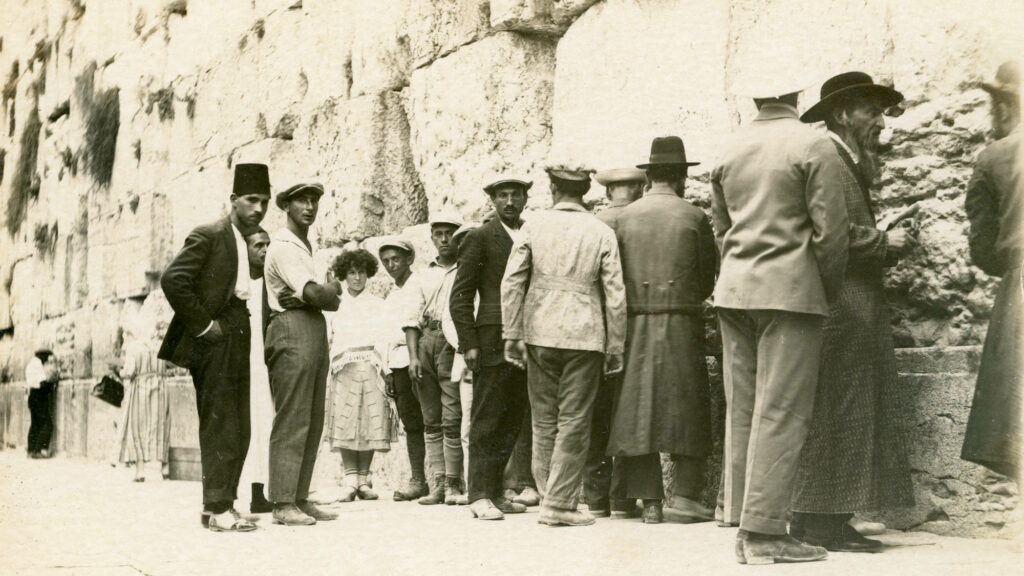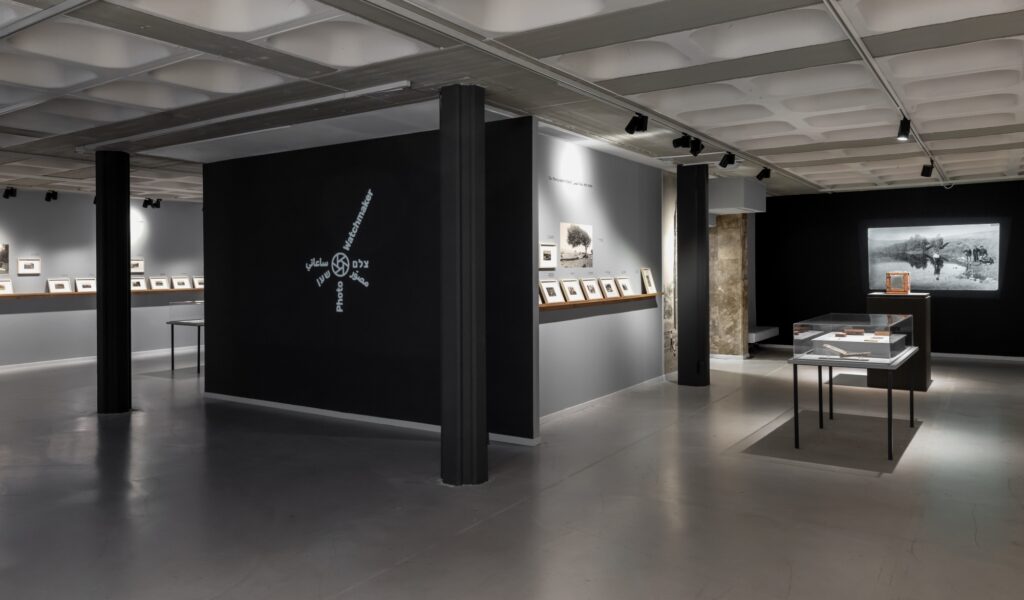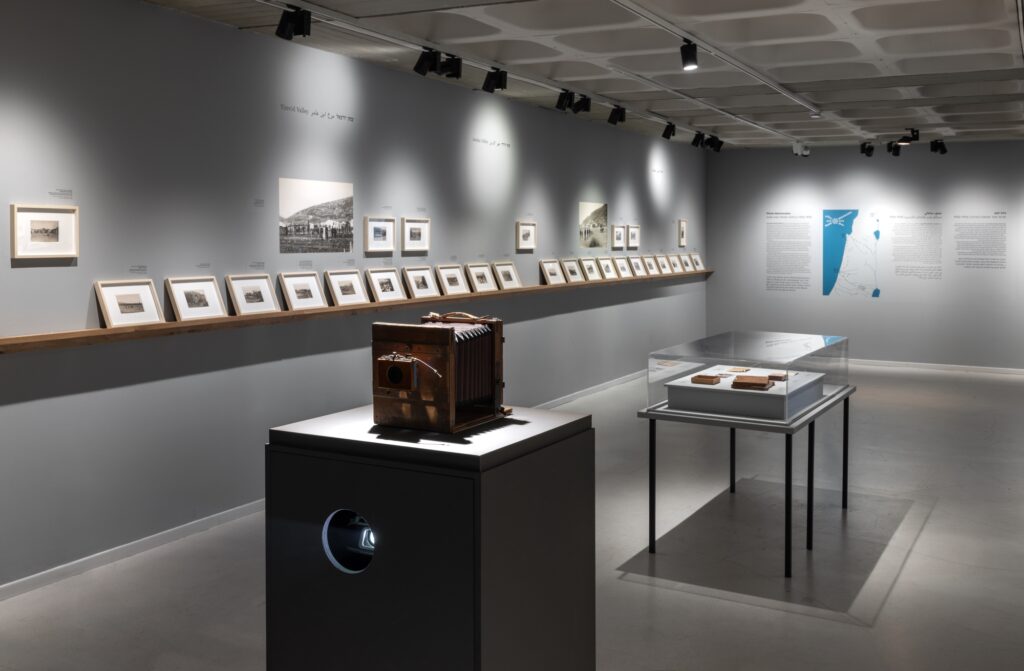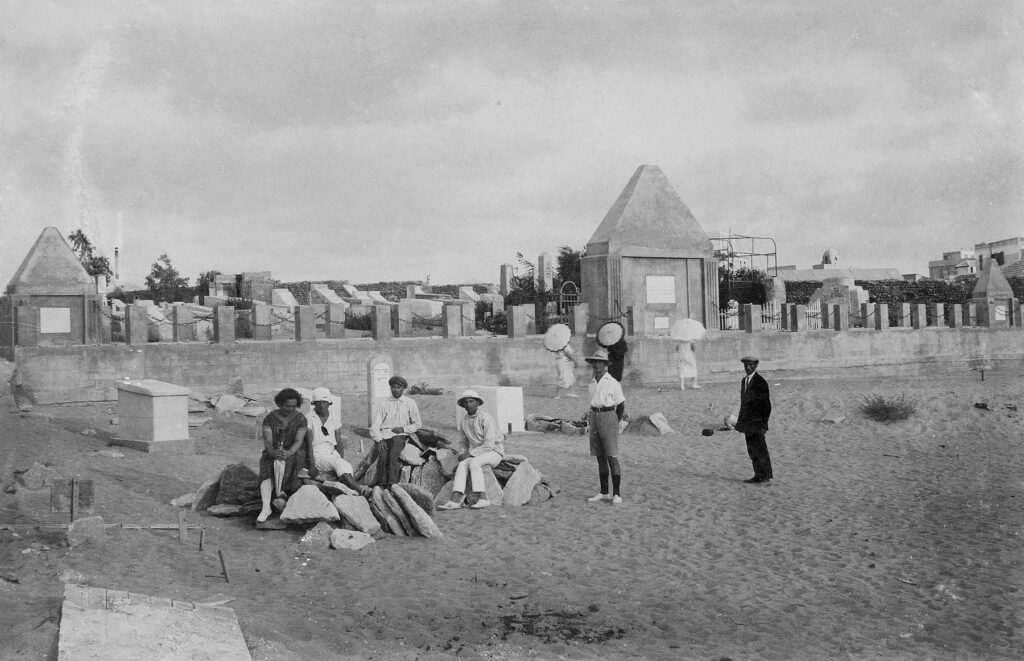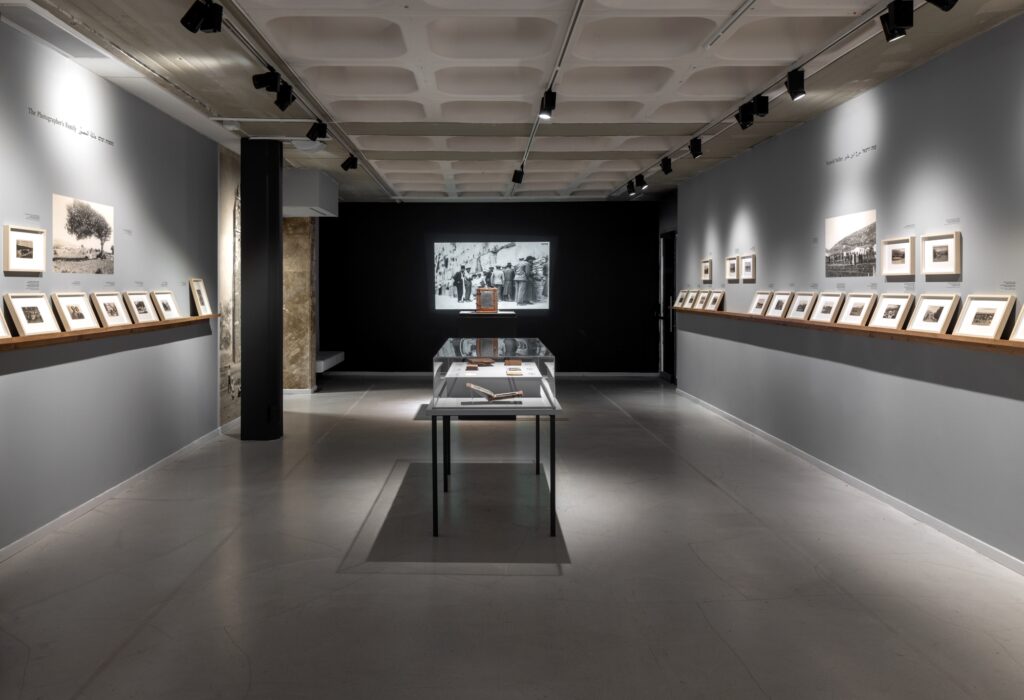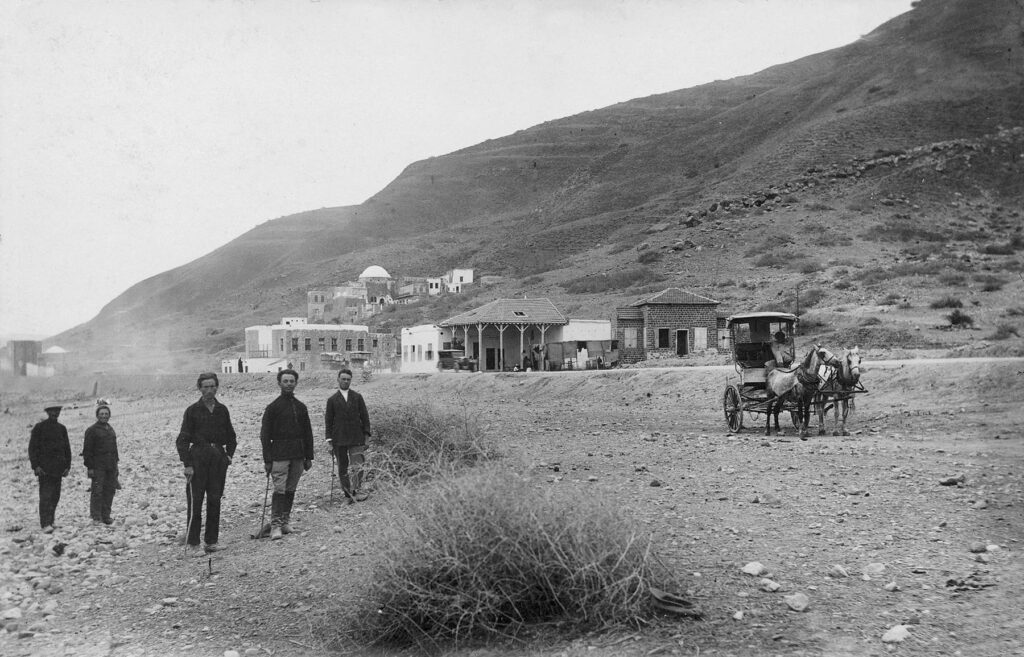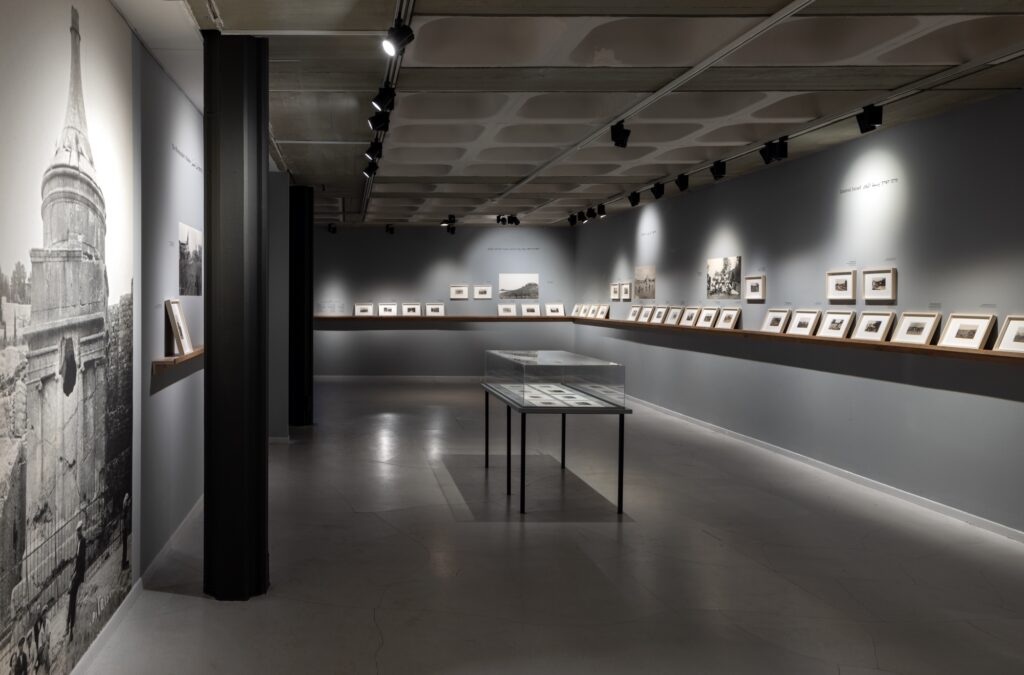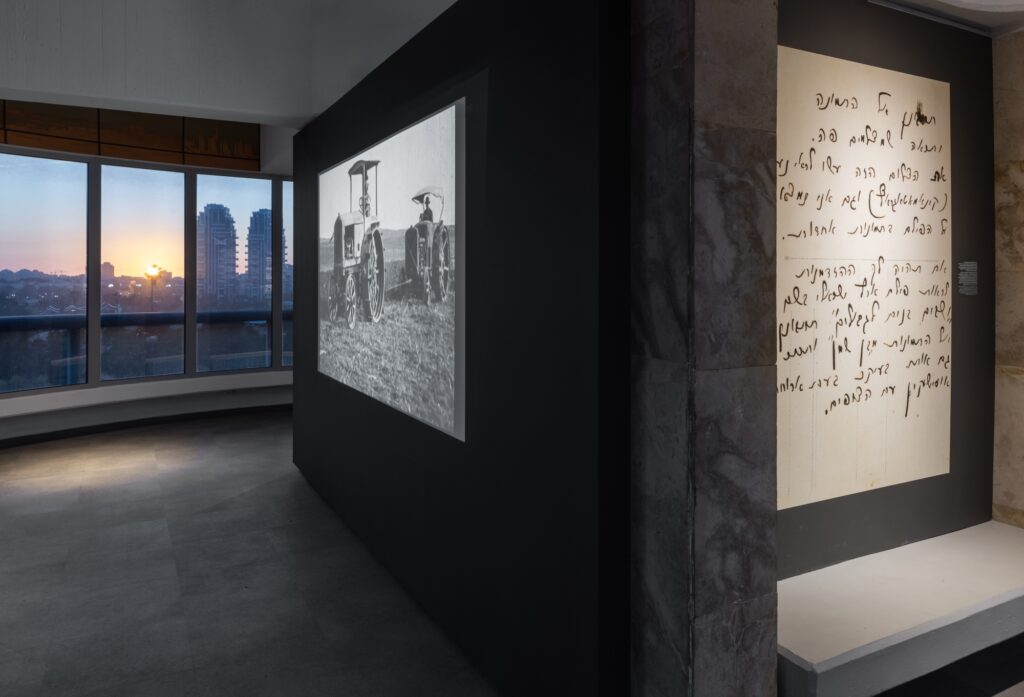Israel Isser Olstein (Elizur) was born in the Lithuanian town of Salantai in 1890. From an early age he loved fixing watches, binding books, woodworking and photography. During the First World War he fled to Vilna, and when it ended he returned to Salant and documented the townspeople and the surrounding landscapes with his camera. Olstein made Aliya to Israel in 1926, and shortly afterwards began touring the country and capturing it on camera. He carried with him a tripod and a portable wooden camera loaded with glass negatives with which he took photographs in around 70 different populated locations in the country, from Tel Hai to Jerusalem. The photography styles popular in the country at the time were posed and Zionist-Romantic, and Olstein worked in the spirit of these styles.
Postcard publishers bought his photographs of local landscapes and distributed them as postcards. In 1928 he opened a photographic equipment and watch repair shop at 14, Nahalat Binyamin St. in Tel Aviv. In 1933 Olstein and his wife Yocheved became members of the Kfar Hess moshav where they worked in agriculture. Olstein locked his camera and his photographs away in a cupboard and began farming the land. When the State of Israel was founded he changed his name to Elitzur, and he died in 1978.
After his death a relation of his, the artist Avraham Eilat, found the wooden camera and a legacy of 300 photographs, originally printed in postcard format: 9×14 cm. Many of these photographs appear in the exhibition. His posed photos are characterized by an aesthetic sense and internal humor. Olstein appears as one of the figures in his own photos, forming part of the composition, an unusual feature in local photography of the period. Being a watchmaker as well as a photographer, he installed a special timer on his camera so that he could release the shutter, position himself in the frame and be immortalized alongside the subjects of the photograph. The motive of his self-documentation remains an enigma.
A clue to the solution appears in a caption in his handwriting that appears on the back of a photograph he took during Ussishkin’s visit to Ben Shemen in 1926, when he was taking stills of the production of the movie “The Return” (“Veshavu Banim Ligvulam”). He writes “Look at the picture and see filming happening here. They are filming for the cinematograph, and I also appear in some of the scenes of the film […] If you get a chance to see the Israeli movie “The Return”, look out for the scenes in Ben Shemen and see if you can pick me out too.”

